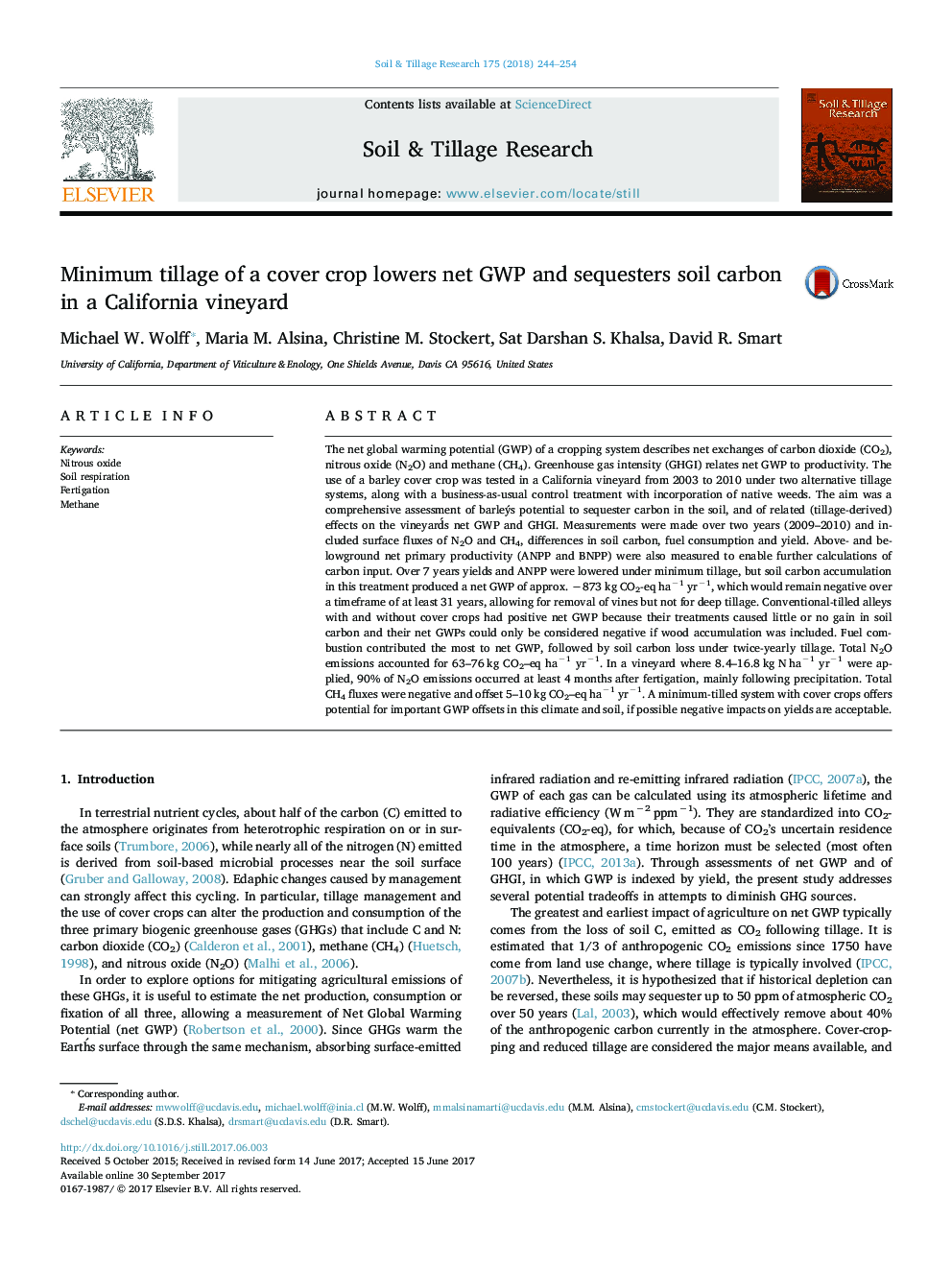| کد مقاله | کد نشریه | سال انتشار | مقاله انگلیسی | نسخه تمام متن |
|---|---|---|---|---|
| 4927439 | 1431828 | 2018 | 11 صفحه PDF | دانلود رایگان |

- First reported experimental net GWP (global warming potential) and GHGI (greenhouse gas intensity) of a vineyard.
- Carbon cycling quantified with ANPP, BNPP and soil respiration.
- Minimum tillage increased SOC by 8.4% in Ap horizon in 7 years.
- Minimum tillage decreased vine water potential, biomass and yields.
- In one year, minimum tillage decreased N2O emission significantly.
The net global warming potential (GWP) of a cropping system describes net exchanges of carbon dioxide (CO2), nitrous oxide (N2O) and methane (CH4). Greenhouse gas intensity (GHGI) relates net GWP to productivity. The use of a barley cover crop was tested in a California vineyard from 2003 to 2010 under two alternative tillage systems, along with a business-as-usual control treatment with incorporation of native weeds. The aim was a comprehensive assessment of barleýs potential to sequester carbon in the soil, and of related (tillage-derived) effects on the vineyardÌs net GWP and GHGI. Measurements were made over two years (2009-2010) and included surface fluxes of N2O and CH4, differences in soil carbon, fuel consumption and yield. Above- and belowground net primary productivity (ANPP and BNPP) were also measured to enable further calculations of carbon input. Over 7 years yields and ANPP were lowered under minimum tillage, but soil carbon accumulation in this treatment produced a net GWP of approx. â873 kg CO2-eq haâ1 yrâ1, which would remain negative over a timeframe of at least 31 years, allowing for removal of vines but not for deep tillage. Conventional-tilled alleys with and without cover crops had positive net GWP because their treatments caused little or no gain in soil carbon and their net GWPs could only be considered negative if wood accumulation was included. Fuel combustion contributed the most to net GWP, followed by soil carbon loss under twice-yearly tillage. Total N2O emissions accounted for 63-76 kg CO2-eq haâ1 yrâ1. In a vineyard where 8.4-16.8 kg N haâ1 yrâ1 were applied, 90% of N2O emissions occurred at least 4 months after fertigation, mainly following precipitation. Total CH4 fluxes were negative and offset 5-10 kg CO2-eq haâ1 yrâ1. A minimum-tilled system with cover crops offers potential for important GWP offsets in this climate and soil, if possible negative impacts on yields are acceptable.
Journal: Soil and Tillage Research - Volume 175, January 2018, Pages 244-254